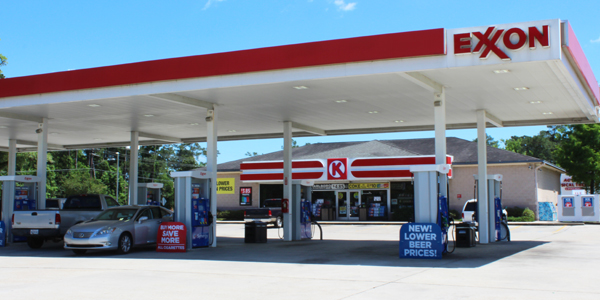Retail Site Selection & Convenience Stores
Proximity & Accessibility of Retailers
Since the beginning of time, retailers have strategically positioned themselves in a manner where they could capitalize on the disposable dollars that their target market spends.
While technology advancements have enhanced the ability for consumers to buy certain products online and have them delivered right to their doorsteps, there are still several retail sectors that cannot be replaced by e-commerce.
This blog series will outline three of those retail sectors: 1) Convenience Stores (C-Stores), 2) Fast Food Restaurants (Quick Serve Restaurants or QSRs), and 3) Drug Stores, as well as the site selection criteria they require.
I started in the commercial real estate industry in 1996. At that time, “portable” phones were in a bag that had to be plugged into a cigarette lighter, the internet was in its infancy stage, and relationships required verbal communication only.
While so much has changed over the past 23 years, three primary demographic criteria have remained a constant for market-based retailers: traffic patterns/counts, population (existing and growth) and access.
All retailers benefit from customers passing their physical stores regularly and having a location that is easily accessed. However, extensive consumer studies have caused certain retailers to apply more weight to traffic patterns and population when evaluating a market. Let me explain.
Part #1: Convenience Stores (C-Stores)
C-Stores are the one retailer that relies most heavily on traffic counts, as opposed to population. Also, C-Stores typically position themselves to take advantage of P.M. traffic patterns.
I started doing commercial real estate site selection work for a regional C-Store in 2002. The Director of Real Estate had over 30+ years of experience at the time. In one of our first meetings, when asked what the most crucial criteria were when looking for a site (outside of immediate competition), he said without hesitation, “We need to be on P.M. traffic side of the road.”
When questioned why that criteria were so crucial, he responded, “If you think about it, most people are pressed for time in the mornings. So, they will typically stop and only put enough gas in their tank to get them to work. If they have a couple of minutes to come inside and buy something, it is usually a small ticket item like coffee or a pack of cigarettes.
On the other hand, P.M. customers are typically not pressed for time. In turn, they are more likely to stop and fill up their tank. Plus, a higher percentage will come inside and buy much larger ticket items, like a 12-pack of beer, a carton of cigarettes or food for dinner.
We have done extensive studies, and our P.M. customers generate 4-5 times larger ticket sales than our A.M. customers. You do the math. That is why we will always prefer our stores to be accessible to the P.M customer.”
Over the span of several years, I sold more than 15 locations to the same C-Store. At one point, the client gave me a trade area in which to find a site. To my surprise, the trade area he provided had very minimal rooftops, at best. Besides, it wasn’t in a high-growth area.
Despite being provided the sales numbers of an existing competitor in the market, the trade area was a mystery to me. Furthermore, the trade area to choose from was on the A.M. side of the road, yet the competitor’s C-Store had the 2nd highest sales out of 65 corporate locations.
I spent the better part of the next week sitting across the street from the competitor’s store and driving the trade area, trying to determine who their customer base was. I sat and watched the A.M., mid-day and P.M. traffic patterns. The store was packed the entire day.
In addition to a railroad track eliminating the P.M. side of the road from being developed, the road was a major thoroughfare to one of two bridges that crossed the Mississippi River. As a result, customers that lived up to 10+ miles away were forced to pass the location on a regular basis.
While the immediate area had limited rooftops, the competitor’s store had record sales based on traffic count alone.
Throughout the site selection process, sometimes the criteria evolve based on a specific market area. That’s why it’s important to consult a site selection specialist who can help you analyze the area and find the ideal location for your business.
Stay Tuned for Part #2 – Fast Food Restaurants or QSRs.
For questions regarding your commercial real estate property, contact J. Collier Thornton at (225) 926-4481 or cthornton@stirlingprop.com.


